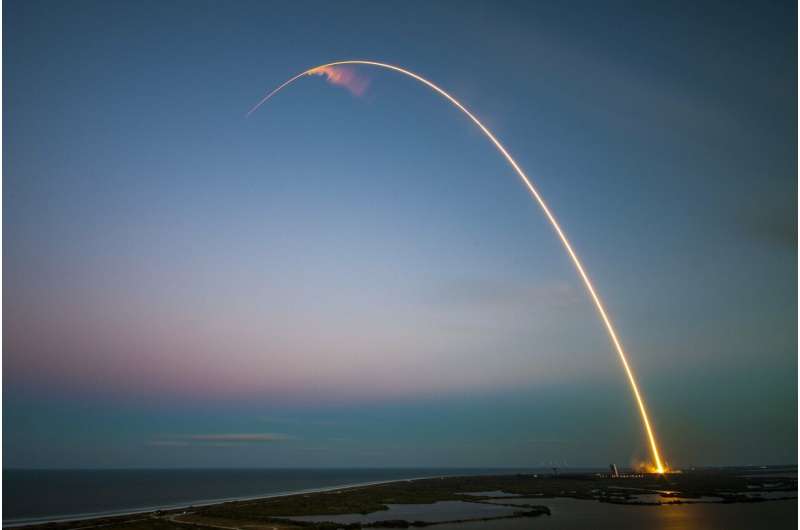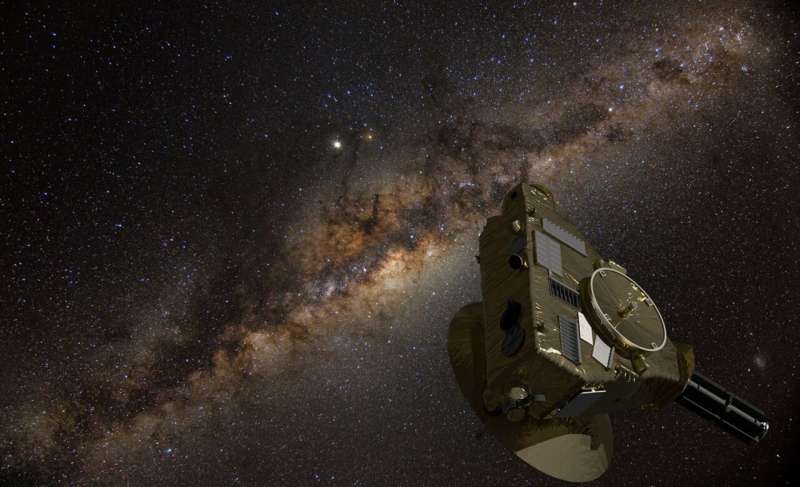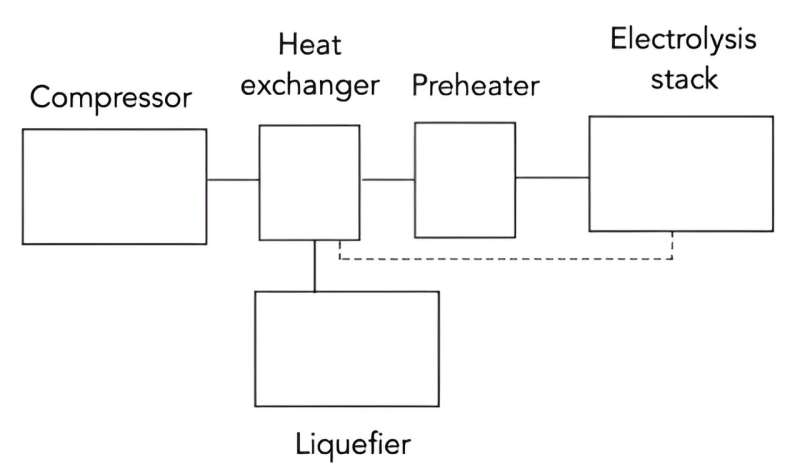
Copernical Team
NASA's tale of two towers: Both Artemis mobile launchers see action

NASA's Artemis program has one tower standing and one just getting started.
Mobile launcher 1 (ML-1), which endured some significant damage after its use on the Artemis I mission last November, has been undergoing repairs and enhancements in preparation for its reuse on next year's planned Artemis II flight, the first with humans on board.
NASA stuck the 380-foot-tall structure atop its slow-moving crawler-transporter 2 on Wednesday at Kennedy Space Center to begin its two-day return to Launch Pad 39-B.
ML-1 is the ground structure that holds NASA's powerful Space Launch System rocket, and for Artemis II, NASA has been working to add essential features for the four humans that will be riding in the Orion capsule atop the rocket. It will make its way into the Vehicle Assembly Building for eventual stacking of all the rocket parts early next year.
For now, though, it has work planned at the launch site where NASA's Exploration Ground Systems team will perform tests and work on upgrades for both the launcher and the launch pad. That includes a launch day demonstration for the Artemis II crew of NASA astronauts Reid Wiseman, Victor Glover, Christina Koch and Canadian astronaut Jeremy Hansen as well as NASA's closeout crew and the rescue team.
New Horizons is so far away, it can measure the true darkness of the universe

Just how dark is the night sky?
If you step outside during a moonless night and look up, it probably doesn't look that dark at all. Streetlights or nearby porch lights fill the air with a background glow, particularly if they happen to be bluish-white LEDs. Light pollution in your neighborhood is likely so bad that you can only see a few bright stars. Even in somewhat rural areas, our skies are so bright that the Milky Way isn't really visible. In North America and Europe, only about a quarter of children have seen the Milky Way.
To get away from all the light pollution you need to travel to a pretty remote corner of the world. One of the most remote is the Andean desert in Chile.
Scientists propose adapting a Mars ISRU system to the changing Mars environment

Human missions to Mars will require a substantial launch vehicle to ascend from Mars to rendezvous with a waiting Earth return vehicle in Mars orbit. For an ascending crew of 6, the current best estimate of oxygen propellants required for ascent is about 30 metric tons. Producing oxygen for ascent propellants and possibly life support from the indigenous CO2 on Mars, rather than bringing oxygen to Mars from Earth, is of significant benefit.
The oxygen production is accomplished through a process known generically as in situ resource utilization (ISRU). Since the Mars Oxygen ISRU Experiment (MOXIE) Project demonstrated operation of a prototype electrolysis system for converting Martian CO2 to O2 on Mars with great success, it is now appropriate to investigate scaling up this prototype to a full-scale system.
In a research paper recently published in Space: Science & Technology, Donald Rapp and Eric Hinterman modeled the performance of a full-scale Mars in situ resource utilization (ISRU) system to produce 30 metric tons of liquid O2, operated for 14 months as the Mars environment changes diurnally and seasonally.
Artemis II crew visit spacecraft
 Video:
00:04:46
Video:
00:04:46
During Artemis I the European Service Module (ESM) surpassed expectations. Now, as we set our sights on Artemis II, the European Service Module is ready to once again serve as Orion’s primary power and propulsion component and keep the spacecraft at the right temperature and on course. And this time, with real astronauts on board.
ESM-2 stands as a testament to ESA's contributions to NASA's Orion spacecraft and the Artemis programme, ensuring the crew will have the essentials – from electricity to temperature control – in the vastness of space.
Next up, ESM-2 will be connected with the crew
NASA study reveals compounding climate risks at two degrees of warming
 If global temperatures keep rising and reach 2 degrees Celsius (3.6 degrees Fahrenheit) above pre-industrial levels, people worldwide could face multiple impacts of climate change simultaneously. This is according to a NASA-led study that analyzed the projected impacts of such warming to understand how different climate effects might combine. A 2-degree rise in global temperatures is considered
If global temperatures keep rising and reach 2 degrees Celsius (3.6 degrees Fahrenheit) above pre-industrial levels, people worldwide could face multiple impacts of climate change simultaneously. This is according to a NASA-led study that analyzed the projected impacts of such warming to understand how different climate effects might combine. A 2-degree rise in global temperatures is considered Oldest extant plant has adapted to extremes and is threatened by climate change
 The rare moss Takakia has adapted over millions of years to a life at high altitudes. An international research team led by Prof. Dr. Ralf Reski from the University of Freiburg and Prof. Dr. Yikun He from the Capital Normal University / China has now discovered exactly how it has developed the ability to survive frost and life-threatening high UV radiation. In the renowned journal Cell, they des
The rare moss Takakia has adapted over millions of years to a life at high altitudes. An international research team led by Prof. Dr. Ralf Reski from the University of Freiburg and Prof. Dr. Yikun He from the Capital Normal University / China has now discovered exactly how it has developed the ability to survive frost and life-threatening high UV radiation. In the renowned journal Cell, they des NASA TechRise Student Challenge tests experiments in stratosphere
 On July 24, students from 30 middle and high schools selected for NASA's TechRise Student Challenge watched their experiments launch aboard a high-altitude balloon, marking the culmination of months of hard work.
Flight tests play a critical role in advancing the agency's space exploration priorities. TechRise - led by NASA's Flight Opportunities program and administered by Future Engineer
On July 24, students from 30 middle and high schools selected for NASA's TechRise Student Challenge watched their experiments launch aboard a high-altitude balloon, marking the culmination of months of hard work.
Flight tests play a critical role in advancing the agency's space exploration priorities. TechRise - led by NASA's Flight Opportunities program and administered by Future Engineer HALO investigates transport of polluted air masses over the Pacific Ocean
 Extreme rainfall during the Asian monsoon repeatedly causes catastrophic destruction in Southeast Asia. However, the effects of this large-scale weather system extend far beyond the Indian subcontinent. Heavily polluted air masses from the near-surface atmosphere in Southeast Asia travel as far as the lower stratosphere above Europe. From August to October 2023, a team of German research institu
Extreme rainfall during the Asian monsoon repeatedly causes catastrophic destruction in Southeast Asia. However, the effects of this large-scale weather system extend far beyond the Indian subcontinent. Heavily polluted air masses from the near-surface atmosphere in Southeast Asia travel as far as the lower stratosphere above Europe. From August to October 2023, a team of German research institu Deep cycling of carbon and chlorine were likely flipped in Earth's early history
 New research led by Macquarie University earth scientist Dr Chunfei Chen sheds new light on geological processes from up to three billion years ago and marks a significant shift in the scientific community's understanding of the early Earth.
The research published this week in Nature gives insight into the profound impact of the planet's gradual cooling on the deep cycling of carbon and ch
New research led by Macquarie University earth scientist Dr Chunfei Chen sheds new light on geological processes from up to three billion years ago and marks a significant shift in the scientific community's understanding of the early Earth.
The research published this week in Nature gives insight into the profound impact of the planet's gradual cooling on the deep cycling of carbon and ch SpaceX launches another batch of Starlink satellites into space
 SpaceX successfully launched a Falcon 9 rocket with a payload of nearly two dozen Starlink satellites into space from Florida's famed Cape Canaveral late Wednesday.
The rocket launched at 11:36 p.m. EDT from Space Launch Complex 40 at Cape Canaveral Space Force Station.
The mission deployed 22 additional Starlink satellites into low-Earth orbit where they will join a constellation of thou
SpaceX successfully launched a Falcon 9 rocket with a payload of nearly two dozen Starlink satellites into space from Florida's famed Cape Canaveral late Wednesday.
The rocket launched at 11:36 p.m. EDT from Space Launch Complex 40 at Cape Canaveral Space Force Station.
The mission deployed 22 additional Starlink satellites into low-Earth orbit where they will join a constellation of thou 
































